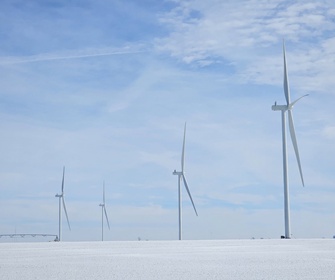As much as 20% of regional power needs along the Atlantic coast could be served by offshore wind farms by 2050, according to researchers with the U.S. Department of Energy’s National Renewable Energy Laboratory (NREL). The researchers modelled the deployment of this emerging U.S. energy sector in new depth and detail in the report “Expanded modelling scenarios to understand the role of offshore wind in decarbonising the United States.”
The researchers who performed the analysis considered a diversity of scenarios to more clearly understand how a single renewable resource can affect the country’s target of decarbonising the power system. The current role of offshore wind electricity in the United States has been understudied, they said.
The researchers found offshore wind could generate as much as 8% of the nation’s electricity by 2050, but that deployment could range widely, from 30 to 250GW, depending on how a variety of factors related to the power system evolve over the coming decades.
NREL co-authors Philipp Beiter, Trieu Mai, and Matt Mowers collaborated with John Bistline from the independent, nonprofit energy R&D institute EPRI to explore a wide range of scenarios related to policy, technology costs, transmission, and siting. The authors deploy a capacity expansion model and find that high levels of offshore wind deployment are most likely in scenarios where there is a combination of stringent decarbonisation policies, low technology costs, fewer siting options for onshore renewables, and limited interregional transmission. For example, the study’s core scenario considers strict zoning regulations for onshore wind and solar panels that expand offshore wind’s market potential.
In many of the scenarios studied, offshore wind deployment is limited to the level defined by current state commitments, with solar photovoltaics and onshore wind meeting most new electricity demand through 2050. The amount of energy from nuclear, hydropower, and fossil fuels is relatively constant across the scenarios, with fossil generation limited by an emissions cap, unless carbon capture and sequestration technology is available and economically viable. Under the study’s core scenario with high load growth and electrification, offshore wind accounts for 133GW by 2050. By comparison, the installed land-based wind farms scattered across the United States today total about 141GW and produce 10% of the country's electricity.
The high uncertainty about future decarbonization pathways also raises the need for greater coordination between local, state, and federal authorities in power sector and offshore wind infrastructure planning, the researchers noted.
The U.S. Department of Energy’s Wind Energy Technologies Office funded the research.








